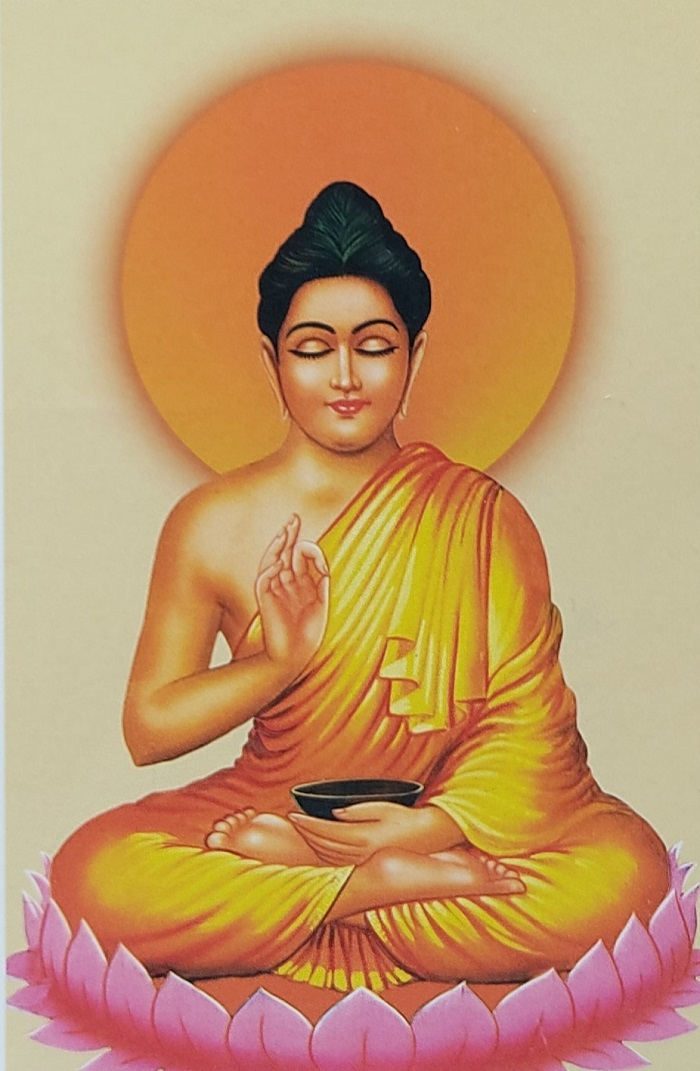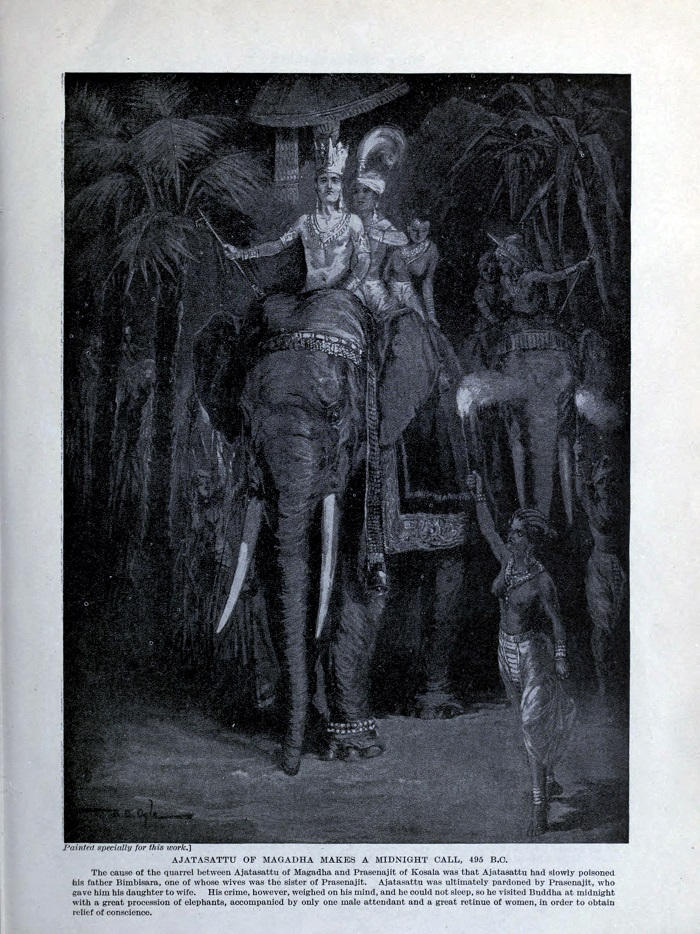

The Vajji was an important Mahajanpada that flourished from the 6th Century to the 4th century BCE. Its uniqueness lies in its political structure, where the rulers were elected by people rather than by succession on a hereditary basis. At that time, when the majority of the kingdoms were governed by an autocratic ruler, the Vajjis had a republican form of government. It was a confederation that included eight different clans. Out of these- the Videhas, Lichhavis, Jantrikas and Kshatriyas were the most popular. And the political organization in Vajji was known as Gana-sanghas. The capital of this Mahajanpada was later annexed by one of the powerful kings of Magadha- Ajatshatru.
The social and political arrangements of the Vajji gave it an important position among the sixteen Mahanjanpadas that existed at that time. Some of these arrangements are listed below −
The Vajji Kingdom was one of the important mahajanapadas, where a democratic type of government system was found at that time.
The unity and equality among the people, by rejecting the Vedic philosophy of the Varna system, led to the development of the Kingdom to a greater extent.
Unlike Magadha, this republican society was stratified into two parts − Kshatriya rajakula (ruling family) and dasa-Karmakar(slaves).
Vaishali, the capital of Vajji, was surrounded by strong fortifications, which protected the Kingdom from enemy attacks.
The most important fact about Vajji is that it was the world’s first republican state in India. Its political structure was based on the system of 'Gana-Sanghas’. A Gana-sangha was comprised of a group of kings nominated by the general people. Each of the members of the sangha was designated a king. They performed all rituals together and took joint decisions for the welfare of the state through discussions and debates in assemblies. Women and slaves were exempted from being a part of these assemblies.
The existence of Vajji as a Gana-Sanghas remained for a longer period until the conquest of the state by the Gupta rulers. Both Gautama Buddha and Mahavira also belonged to this Mahajanapada. We can find the details about the working of Gana sanghas even in Buddhist texts.
There was an argument about the role of Gautam Buddha behind the Magadh - Vajji war. Although Buddha used to keep himself away from social and political affairs, it is believed that King Ajatshatru sent his minister to meet with Buddha and take advice from him. Buddha told him about the seven Noble Truths, which made Vajj a strong Kingdom which was difficult to be conquered. In this way, Buddha wanted to avoid the war between Vajjia and Magadha. But Ajarshatru took advantage of the Buddha's advice and found a way to defeat the Vajji kingdom.

The war between the Magadh and the Vajji kingdom began from about 484 to 468 BCE. The Haryanka dynasty of Magadha and the Licchavis confederation of Vajji were the opponents in this war. It was believed that there was a diamond mine present in a town near the Ganges river. King Ajatashatru and the Licchavis of Vajji were about to get an equal part of that. However, Ajatashatru failed to fulfil the target, and all the responsibility was snatched by the Vajjian people.
Ajatashatru became restless, and he thought that it was not possible to fight the whole Vaishali at the same time. So, he decided to break the unity of Gana-sanghas of the Vajji kingdom before doing anything else. Therefore, he sent his minister to the Buddha to ask him about the tricks to defeating the Vaishali. Buddha provided the seven secrets of the Vaishali city and the Vajjis. He said that the people of Vaishali city were very punctual; they respected their elders and also respected women in their society. The daughters of the Vaishali city were quite powerful. After knowing about the secrets of Vajji city, Ajatashatru sent his prime minister to join the coalition of Vajji city. Within a short period of time, he was able to break the unity of this Mahajanpada and ultimately annexed this state after 16 years of prolonged war.

During this war, even though the Vajjians were defeated but they tried their best to fight against Magadha. They enclosed themselves inside the walls of Vaishali city and closed the main gate. The walls around Vaishali were very strong. So, Ajatashatru was not able to break the wall. At last, the Magdhan army succeeded in breaking the walls of Vaishali and entered the place. Finally, the war ended with the victory of the Magadhan people over the Vajji. The Vajji Kingdom was then annexed by the Magadha empire.
The existence of the Vajji kingdom was found from about the sixth century BC to the fourth century CE. The Kingdom came into the limelight for its special arrangement of government. It is the first Kingdom renowned for its democratic type of political organization called Gana-sangha. There was more than one king who ruled at that time. All of them used to perform duties together.
The system of the society of the Vajji Kingdom was impressive at that time. Elders were respected, and women held a respectful position in society. The strength of the Kingdom was the unity of the people. They made a strong wall as a fortification to protect their Kingdom. However, Ajatshatru came to know about the weakness of the Vajji Kingdom and attacked it. Eventually, he got victory and included Vajji in his Kingdom.
The record of the Vajji kingdom is present in the scriptures of Buddhism and Jainism. The description of Vajji can also be detected in other accounts written by Chanakya, Xuanzang, and Paninias, describing it as one of the important Mahajanapadas among the other sixteen mahajanapadas.
Q.1. Where is the capital of Vajji situated in modern-day India?
Ans. The capital of Vajji was Vaishali, and it is situated in modern-day Bihar.
Q.2. What does republic mean? Name some republic Mahajanapadas of ancient India.
Ans. The system of government where the ruling class is elected by the consent of the people instead of hereditary succession. Some of the republic mahajanapadas were Malla, vajji , kuru and Kamboja.
Q.3. Who was Ajatshatru?
Ans. Ajatshatru, the son of Bimbisara, was the second powerful king of Magadha. He was well known for his military conquests. He conquered several kingdoms, including Vaishali, Kasi, and Kosala. Under him, the Magadha became the most powerful Kingdom in north India.
Q.4. What do you understand by Mahjanapada?
Ans. During the later Vedic period, the Janapadas (areas where the Indo-Aryan tribes settled) grew into large and powerful kingdoms that came to be known as Mahajanapadas.
Q.5. Name sixteen Mahajanpadas of the sixth century BCE.
Ans. Gandahar, Kamboja, Magadha, Vajji,Matsya, Kuru, Chedi, Malla,Kosala,Shurasena,Ashmaka, Anga,Kashi,Avanti, Vatsa and Panchala.